In the dynamic world of business, daily operations bombard entrepreneurs, business stakeholders, and product managers with a deluge of decisions. These choices, big or small, carve the trajectory of business growth. They range from prioritizing everyday tasks to assessing opportunities, creating processes, and far beyond. Often, the complexity weighs heavily on an organization’s success or failure.

One tool that can help you navigate this maze is the decision matrix.
Often, the plethora of choices business leaders must make generates decision fatigue, clouding objectivity and escalating subjectivity. The decision matrix comes to the rescue by distilling choices down to their core attributes, offering a simplified, objective perspective for comparison.
In this guide, we’ll show you how using a decision matrix can help you rise above the chaos, prioritize alternatives, and make insightful decisions with confidence and clarity.
A decision matrix, also known as a decision-making or weighted decision matrix, facilitates the evaluation and prioritization of multiple alternatives against diverse criteria. This universal tool finds use in varied domains, from business strategy and project management to product development.
At the heart of a decision matrix is a straightforward grid. This grid catalogues options as rows, while the criteria for assessment form the columns.
Let’s look at an example. Here, the options are three different software features:
The criteria for evaluating these options are customer need, development cost (where a lower cost is better, so it’s scored in reverse), and business value.
Each of these criteria is scored on a scale from 1 to 5. The total score is the sum of these scores for each option. This can provide an objective framework to decide which feature to focus on developing next:
| Criteria/Options | User Analytics | Mobile Responsiveness | API Development |
|---|---|---|---|
| Customer need (1-5) | 4 | 5 | 3 |
| Development cost (1-5, lower cost = higher score) | 3 | 2 | 5 |
| Business value (1-5) | 5 | 4 | 4 |
| Total score | 12 | 11 | 12 |
Each intersection between an option and a criterion then houses a score that reflects how well that option fulfills the criterion. The total score for an option, calculated by aggregating these individual scores, acts as a crucial guidepost in making informed decisions. In essence, an option with a higher total score often indicates a more promising choice.
The charm of the decision matrix lies in its logical rigor. Instead of basing decisions on intuitions or assumptions, this tool fosters a methodical analysis, ultimately promoting more insightful choices. Here are some of the notable benefits:
The decision matrix proves particularly potent in product management. It equips product managers to assess and balance customer needs, market trends, business objectives, and goals, thereby making informed, data-driven decisions.
Decision matrices emerge in diverse forms, each tailored for specific scenarios and decision-making processes. Some of the more prevalent variants are:
The simple decision matrix serves as the basic blueprint. It contrasts options against chosen criteria, enabling decision-makers to assign scores based on a predetermined scale:
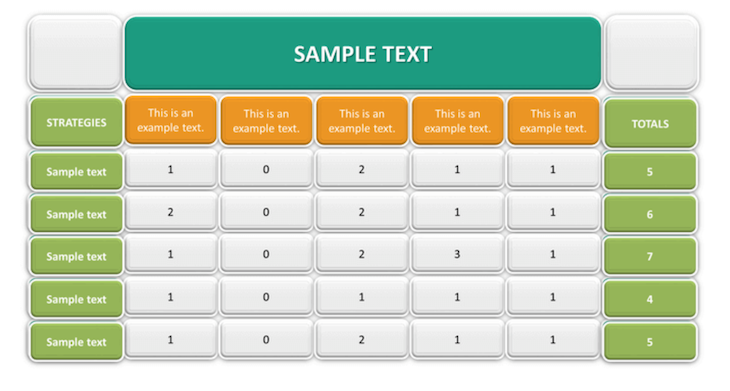
Typically, these scores are numerical, offering a straightforward method for comparison.
The Eisenhower Matrix, also known as the Eisenhower Decision Matrix, Eisenhower Box, and Urgent-Important Matrix, is a time and task management tool that helps individuals prioritize their tasks by considering two factors: urgency and importance.
To use the Eisenhower Matrix, first identify all the tasks you need to complete. Then, based on the urgency and importance of each one, place it in one of the four quadrants of the matrix:
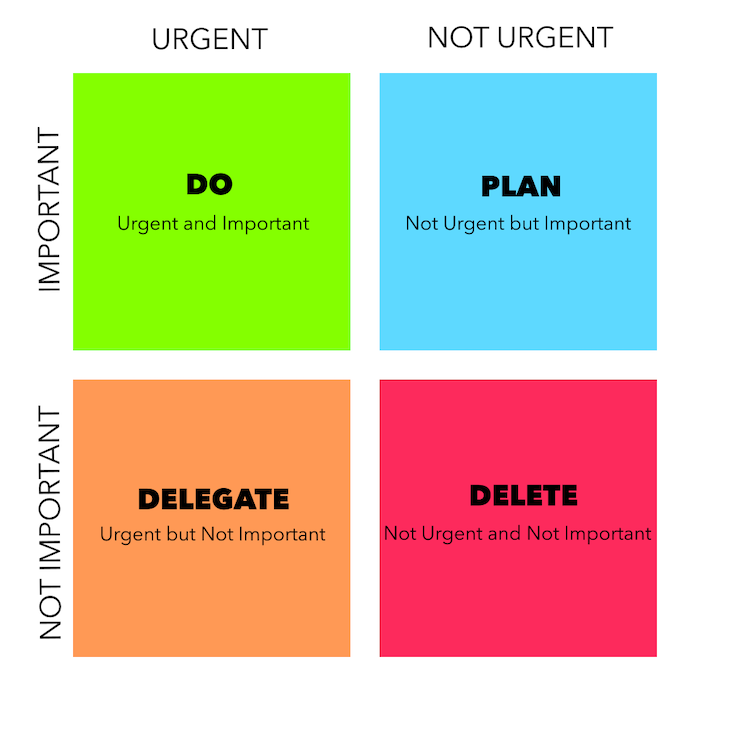
The AHP takes decision-making to a new level of complexity. Rather than merely contrasting options against criteria, the AHP introduces the concept of sub-criteria, granting a deeper level of analysis:
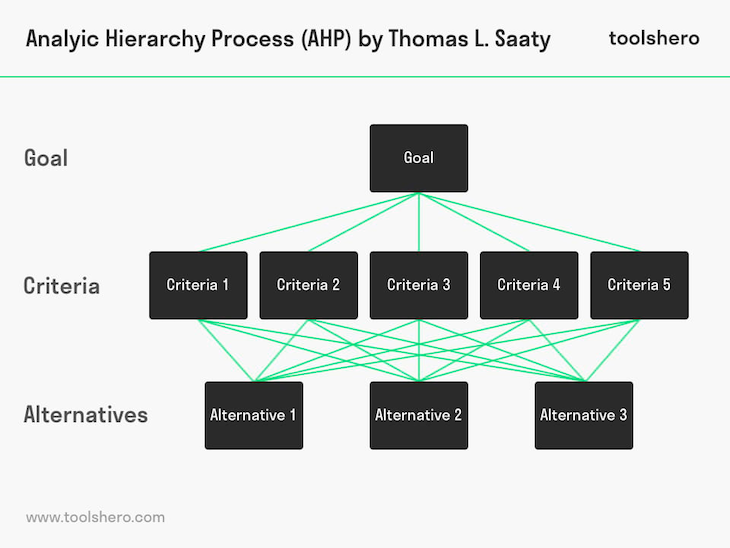
Additionally, the AHP uses pairwise comparisons, allowing stakeholders to judge the relative importance of each goal. In this process, the AHP does not dictate a ‘correct’ decision. Instead, it illuminates the path to the decision that best aligns with the established goals.
Such a tool proves invaluable in strategic decision-making contexts, such as succession planning or resource allocation.
This variation of a decision matrix introduces a sense of importance to each criterion. By assigning weights and scores to individual criteria, the weighted decision matrix helps discern the priority option:
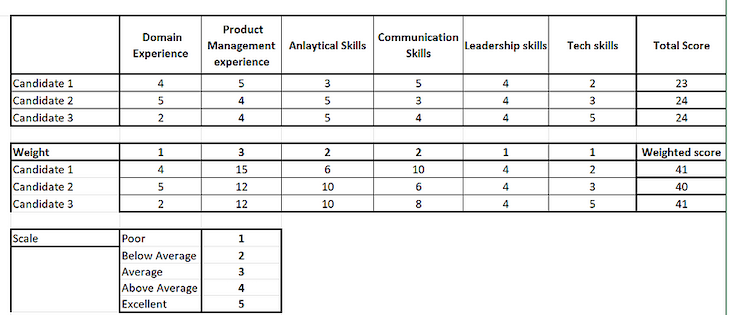
A weighted decision matrix can be deployed in various scenarios, such as when evaluating product features or backlogs against criteria like time, effort, impact, and reach.
The Pugh matrix adds an element of reference to the decision-making process. It operates by selecting a benchmark option, then evaluates all other alternatives in comparison to this reference point:
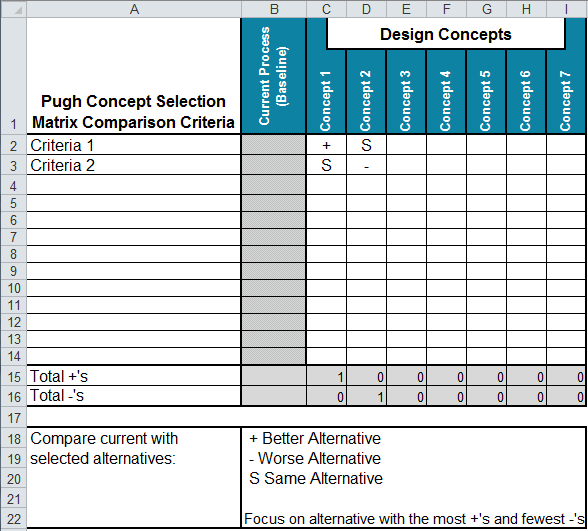
The Pugh matrix thus provides a relative analysis, facilitating informed decision-making.
When decision-making involves sequential dependencies, decision trees come into play. This tool graphically represents potential decisions and their outcomes in a tree-like structure. Every node in the tree depicts a decision point, and the branches signify different possible actions:
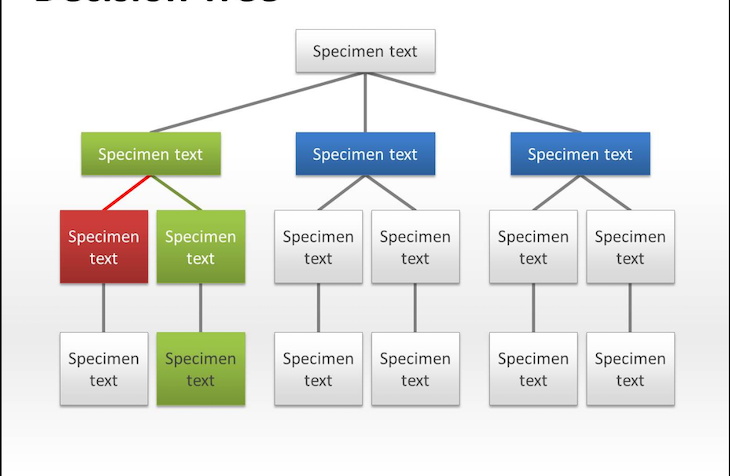
By offering a visual exploration of decision paths, decision trees greatly simplify the decision-making process.
Building a decision matrix is a process that necessitates attention to detail and an understanding of the objectives at hand. The following steps serve as a road map for constructing an effective decision matrix:
Mastering the art of the decision matrix can be transformative. It can elevate an organization’s decision-making process from chaotic and ambiguous to structured and insightful. So, embrace this tool, navigate the decision labyrinth with ease, and accelerate towards your business goals.
The templates below are designed to help you get started creating a decision matrix for your product or business:
You can fill out the following decision matrix template by following the instructions outlined above:
| Criteria/options | Option 1 | Option 2 | Option 3 |
|---|---|---|---|
| Criterion 1 | Score 1.1 | Score 2.1 | Score 3.1 |
| Criterion 2 | Score 1.2 | Score 2.2 | Score 3.2 |
| Criterion 3 | Score 1.3 | Score 2.3 | Score 3.3 |
| Total score | Total 1 | Total 2 | Total 3 |
Fill out the score for each option based on each criterion, then multiply that score by the weight of the criterion to get the weighted score. Sum these up for each option to get the total weighted score:
| Criteria | Weight | Option 1 | Option 2 | Option 3 |
|---|---|---|---|---|
| Criterion 1 | 0.3 | Score 1.1 | Score 2.1 | Score 3.1 |
| Criterion 2 | 0.5 | Score 1.2 | Score 2.2 | Score 3.2 |
| Total weighted score | Total weighted 1 | Total weighted 2 | Total weighted 3 |
Use one option as a reference and fill out whether each other option is better, the same, or worse than the reference based on each criterion. This provides a relative comparison between options:
| Criteria/options | Reference (option 1) | Option 2 | Option 3 |
|---|---|---|---|
| Criterion 1 | – | Better/same/worse | Better/same/worse |
| Criterion 2 | – | Better/same/worse | Better/same/worse |
While decision matrices offer considerable benefits, it’s crucial to remember that no tool is flawless. Recognizing potential pitfalls and challenges can help users mitigate their impact.
Here are some challenges associated with using decision matrices:
Despite these challenges, decision matrices can still provide a robust structure for decision-making. Here’s how you can manage the mentioned obstacles:
Product management involves making numerous impactful decisions. A decision matrix can aid product managers in various critical areas, including backlog/feature prioritization, vendor selection, roadmap planning, A/B testing, go-to-market (GTM) strategy, risk mitigation, and more. Here’s how:
These examples demonstrate the practical applications of a decision matrix, enabling product managers to leverage data throughout the product lifecycle.
As a product manager, every decision you make is a step forward in your product’s journey, and you want to make sure each step counts. By embracing a few best practices, you’ll ensure your decision matrix is not just a rote process but a powerful tool, enabling you to make strategic, data-driven decisions.
Here are some tips and tactics for product managers when using a decision matrix:
A decision matrix encourages objectivity over subjectivity in comparing options and identifying optimal solutions. While every tool has limitations, a product team can enhance decision-making by combining a decision matrix with other frameworks and tools, such as SWOT, RICE, and 2×2 prioritization.
The decision matrix approach allows for consideration of additional factors and contexts in decision-making. In essence, a decision matrix provides a systematic framework that, in conjunction with other tools, improves clarity and enables product teams to make informed, well-considered decisions.
Featured image source: IconScout
LogRocket identifies friction points in the user experience so you can make informed decisions about product and design changes that must happen to hit your goals.
With LogRocket, you can understand the scope of the issues affecting your product and prioritize the changes that need to be made. LogRocket simplifies workflows by allowing Engineering, Product, UX, and Design teams to work from the same data as you, eliminating any confusion about what needs to be done.
Get your teams on the same page — try LogRocket today.

The continuous improvement process (CIP) provides a structured approach to delivering incremental product enhancements.

As a PM, you’re responsible for functional requirements and it’s vital that you don’t confuse them with other requirements.

Melani Cummings, VP of Product and UX at Fabletics, talks about the nuances of omnichannel strategy in a membership-based company.

Monitoring customer experience KPIs helps companies understand customer satisfaction, loyalty, and the overall experience.